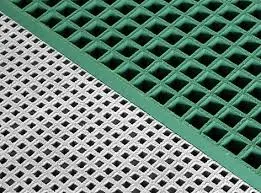
-
 Afrikaans
Afrikaans -
 Albanian
Albanian -
 Amharic
Amharic -
 Arabic
Arabic -
 Armenian
Armenian -
 Azerbaijani
Azerbaijani -
 Basque
Basque -
 Belarusian
Belarusian -
 Bengali
Bengali -
 Bosnian
Bosnian -
 Bulgarian
Bulgarian -
 Catalan
Catalan -
 Cebuano
Cebuano -
 China
China -
 China (Taiwan)
China (Taiwan) -
 Corsican
Corsican -
 Croatian
Croatian -
 Czech
Czech -
 Danish
Danish -
 Dutch
Dutch -
 English
English -
 Esperanto
Esperanto -
 Estonian
Estonian -
 Finnish
Finnish -
 French
French -
 Frisian
Frisian -
 Galician
Galician -
 Georgian
Georgian -
 German
German -
 Greek
Greek -
 Gujarati
Gujarati -
 Haitian Creole
Haitian Creole -
 hausa
hausa -
 hawaiian
hawaiian -
 Hebrew
Hebrew -
 Hindi
Hindi -
 Miao
Miao -
 Hungarian
Hungarian -
 Icelandic
Icelandic -
 igbo
igbo -
 Indonesian
Indonesian -
 irish
irish -
 Italian
Italian -
 Japanese
Japanese -
 Javanese
Javanese -
 Kannada
Kannada -
 kazakh
kazakh -
 Khmer
Khmer -
 Rwandese
Rwandese -
 Korean
Korean -
 Kurdish
Kurdish -
 Kyrgyz
Kyrgyz -
 Lao
Lao -
 Latin
Latin -
 Latvian
Latvian -
 Lithuanian
Lithuanian -
 Luxembourgish
Luxembourgish -
 Macedonian
Macedonian -
 Malgashi
Malgashi -
 Malay
Malay -
 Malayalam
Malayalam -
 Maltese
Maltese -
 Maori
Maori -
 Marathi
Marathi -
 Mongolian
Mongolian -
 Myanmar
Myanmar -
 Nepali
Nepali -
 Norwegian
Norwegian -
 Norwegian
Norwegian -
 Occitan
Occitan -
 Pashto
Pashto -
 Persian
Persian -
 Polish
Polish -
 Portuguese
Portuguese -
 Punjabi
Punjabi -
 Romanian
Romanian -
 Russian
Russian -
 Samoan
Samoan -
 Scottish Gaelic
Scottish Gaelic -
 Serbian
Serbian -
 Sesotho
Sesotho -
 Shona
Shona -
 Sindhi
Sindhi -
 Sinhala
Sinhala -
 Slovak
Slovak -
 Slovenian
Slovenian -
 Somali
Somali -
 Spanish
Spanish -
 Sundanese
Sundanese -
 Swahili
Swahili -
 Swedish
Swedish -
 Tagalog
Tagalog -
 Tajik
Tajik -
 Tamil
Tamil -
 Tatar
Tatar -
 Telugu
Telugu -
 Thai
Thai -
 Turkish
Turkish -
 Turkmen
Turkmen -
 Ukrainian
Ukrainian -
 Urdu
Urdu -
 Uighur
Uighur -
 Uzbek
Uzbek -
 Vietnamese
Vietnamese -
 Welsh
Welsh -
 Bantu
Bantu -
 Yiddish
Yiddish -
 Yoruba
Yoruba -
 Zulu
Zulu
frp tee
Understanding FRP Tee A Versatile Component in Modern Engineering
In the world of engineering and construction, the quest for materials that combine strength, durability, and lightweight properties is ongoing. One of the standout innovations in this realm is the FRP tee, or Fiber Reinforced Polymer tee. This composite material is increasingly being recognized for its applications in various industries, from construction to aerospace.
FRP, or Fiber Reinforced Polymer, is composed of a polymer matrix reinforced with fibers, often glass or carbon, which enhances its mechanical properties. The resulting material is not only robust but also offers corrosion resistance, making it suitable for harsh environments. The tee design is a cross-sectional shape resembling the letter 'T', enabling it to function effectively in structural applications, such as beams and columns.
.
Another notable characteristic of FRP tees is their resistance to environmental factors. Traditional materials like steel are subject to rust and corrosion, especially in coastal or chemical-laden environments. In contrast, FRP provides an excellent solution for applications exposed to moisture, chemicals, or extreme temperatures. For instance, FRP tees are widely used in sewage treatment plants and chemical processing industries, allowing for long-lasting integrity without the need for frequent maintenance or replacement.
frp tee

Additionally, the ease of manufacturing FRP tees allows for customization in various applications. These components can be fabricated to specific sizes and shapes tailored to a project's unique requirements. This versatility enables engineers and architects to innovate and design structures that were previously deemed challenging or impossible with conventional materials.
The economic implications of using FRP tees also cannot be overlooked. While the initial cost of FRP materials may be higher than steel or concrete, the long-term savings associated with reduced maintenance, longevity, and energy efficiency make it a cost-effective choice in the long run. This balance of upfront investment versus long-term benefits aligns perfectly with modern sustainability goals in engineering.
As industries continue to evolve, the use of FRP tees is expected to expand. Their unique properties align with the growing emphasis on green engineering practices and sustainable resource management. Furthermore, as technology advances, the manufacturing processes for FRP will likely become more efficient, broadening its applicability across various sectors.
In conclusion, the FRP tee stands out as a paradigm of innovation in materials engineering. Its impressive combination of strength, lightweight, corrosion resistance, and versatility positions it as an invaluable component in modern construction and infrastructure. As we continue to seek solutions that meet the demands of a rapidly changing world, the FRP tee exemplifies a forward-thinking approach to material science and engineering.
Latest news
-
FRP Hood Durable & Lightweight Fiberglass Hood SolutionsNewsApr.29,2025
-
Heavy-Duty Jackhammers for Construction Work Powerful & Portable Electric Demolition ToolsNewsApr.29,2025
-
High-Strength Fiberglass Flanges FRP Blind & Custom Flange SolutionsNewsApr.28,2025
-
Fiberglass Pipe Flanges High-Pressure & Corrosion-Resistant SolutionsNewsApr.28,2025
-
FRP Fuel Tanks Durable Fiberglass & PP Composite Fuel Storage SolutionsNewsApr.28,2025
-
FRP Trough Covers Durable Industrial Protective SolutionsNewsApr.28,2025









